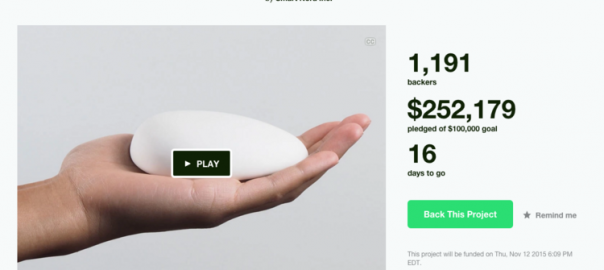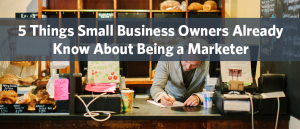We live in a golden age of entrepreneurship. Now, more than ever before, it’s easier to start a business, and easier than ever to scale that business to stratospheric heights.
Witness Uber. The darling of Silicon Valley (if not the media or the taxi industry) is just 6 years old yet has managed to achieve a market capitalization (the total value of its stock) of over $ 50 billion. That’s 50 billion dollars in just over 6 years. That’s higher than the market capitalization of GM, which was founded in 1908.
Another comparison? It took GM 30 years to reach a market cap of 1 billion. Uber? Just over 3.
The technological tools that entrepreneurs have at their disposal now give them an unprecedented ability to build a business model, find customers, test their business model, and reach a large target market – just some of the activities that entrepreneurs need to undertake in order to get traction for their idea.
STARTING A BUSINESS – THE OLD WAY
Flash back 25 years or so. This is how you might have gone about starting a business back then:
- Come up with an idea.
- Spend 3-4 months writing a business plan.
- Go to a bank for financing.
- Get rejected by the bank.
- Approach another bank.
- Repeat steps 4 and 5 several times.
- Get financing.
- Spend 6-12 months building a prototype.
- Spend 3-6 months customer testing.
- Build the product.
- Approach the bank for production and marketing $ $ $ .
- Repeat steps 4 and 5 again.
- Get 2nd round of financing.
- Launch your business.
- Pray.
By the time you felt like you had a product that’s ready to go and were ready to launch, you’d have probably spent 2-4 years of your life, $ 50,000 to $ 500,000, and probably felt and looked something like this:

STARTING A BUSINESS – TODAY
Contrast the method above with a new way to launch a business today, with minimal risk and maximum efficiency.
When I work with and advise startup entrepreneurs, I follow a well-defined method for clarifying, testing and validating the business model – before going to market and spending thousands or tens of thousands of dollars on prototyping and/or marketing.
The method looks like this (I’ll describe each step in detail):
- Discover a problem.
- Build the business model (not the business plan).
- Validate the business model.
- Test the business model.
- Get some startup $ $ $ .
- Launch a Minimum Viable Prototype.
- Get customer feedback.
- Improve the product.
This methodology is inspired by lean startup principles (for a great read on this topic, check out Ash Maurya’s great book, Running Lean.
Let’s go through these steps in detail.
1. DISCOVER A PROBLEM
Instead of starting with an idea, start with a problem. Ask yourself:
“What customer group has a problem that I can feasibly solve?”
Start with your hunches, then learn everything you can about those customers and their problems.
I’ve seen too many would-be entrepreneurs fail because they fell in love with their idea. Their whole business was so oriented around their idea, their product, and their vision that they forgot that the central goal of business is to solve a specific problem (or problems) and create value for its customers.
To this day it amazes me how many entrepreneurs totally leave their customers out of the equation.
So shift your thinking, and start thinking about who your customers will be, what problems they have, and how you will solve them better (cheaper, faster, more elegantly, etc.) than their status quo. If you can imagine that, then you have yourself the beginnings of a viable business.
2. BUILD THE BUSINESS MODEL
I’m not a fan of business plans. In fact, I think they’re pretty much worthless, unless you need one to pull the wool over an investor or bank manager’s eyes.
They’re worthless because:
a) they take a ton of time to put together, and then they gather dust on a shelf or hard drive and are rarely ever referred to on an ongoing basis
b) they’re laden with assumptions, many of which are typically disproven once you actually launch.
What’s the alternative?
Build a business model, using one of the many modeling tools out there.
I started using the Business Model Canvas (download available here) about 6 years ago, when I launched my first social enterprise incubator, Project Wildfire.

A completed Business Model Canvas
It was, at the time, a revolutionary tool for describing the workings of a business, with ‘blocks’ that described the most important aspects of a business model, such as Customer Segments, Value Proposition, and Revenue Streams.
Unlike a business plan, the canvas was and is meant to be a dynamic, living document of your business, adapting constantly to shifting conditions and new information. If you find, for instance, that a particular customer segment isn’t responding to your Value Proposition, for instance, simply add another to the canvas and then get to work testing your business model with that new segment.
A few years later, I discovered the Lean Canvas. I found this canvas more suitable to the entrepreneurs I was working with, most of whom were in startup (or pre-startup) mode and didn’t have things like Key Partners or Key Resources (two of the blocks of the Business Model Canvas).
The Lean Canvas is a fantastic tool, but it was lacking some key information pieces that the entrepreneurs I worked with – most of whom were social entrepreneurs looking to achieve a societal benefit as well as profitability – needed to capture in their business model.
Hence the Impact Canvas was born. This is a tool I developed in 2014 based on the Lean Canvas, but with modifications designed to capture the ‘social good’ aspect of the business.

The Impact Canvas, designed for businesses that incorporate a social component
These are but 3 of many tools in existence to help you capture your business model. Take a look at them, and others, and see which works for you, then use it to take your idea out of your head – or off the napkin – and into a full-fledged business model.
It’s important to note that this stage simply involves capturing your Plan A – an initial draft of what your business might look like. As you get into the process further, testing and validating your business model, chances are that significant aspects of your model will change – and that’s OK (and expected).
3. VALIDATE THE BUSINESS MODEL
Now that you have captured your initial business model, you’ll want to get some feedback on whether you’re on the right track or not. This is where those all important people, customers, come in.
In the beginning stages of developing your business, your focus needs to be squarely on customers: who they are, what makes them tick, and what their problems are (this should always be a significant focus of your business, but particularly during the modeling and validation phase. This is where good ol’ fashioned sit-down-and-talk-to-people work comes in.
Start by identifying at least 3-5 people who fit the customer segment profile you outlined earlier in the ‘Build The Business Model’ phase. Perhaps you already know this people, but if not, use your network – identify the types of people you want to talk to as clearly as possible and with as much detail as possible, and then ask your networks (friends, social media contacts, etc.) if they can introduce you.
Once you’ve identified your first 3-5 people, you should be able to get referrals from them to more.
Schedule meetings (face to face whenever possible, or phone meetings if in-person meetings are not feasible) and get to know them. These are the questions you should keep in mind when talking to potential customers:
- Who are they? (ask demographic questions that are relevant to your idea)
- What are their wants/needs/fears? (what are the problems that keep them up at night?)
- Is their problem worth solving? (how badly do they want to solve it?)
- What is their status quo – how do they solve the problem right now?
- What would convince them to switch to another solution (yours)? What would hold them back from doing so?
Your goal in this stage is not to sell people on your idea – this will turn them off and make them unlikely to open up to you – but to learn as much about them (in the context of your idea) as you can.
When you’re done talking to people, ask them if they can recommend 2-3 other people that fit the same profile/have the same problems. This will allow you to quickly expand your network of interviewees.
At bare minimum you need to talk to at least 10 people, and have significant evidence from a majority of them that there is a problem worth solving – one that you can feasibly solve.
10 is a bare minimum, but I recommend talking to at least 20 people. This may seem like a waste of time when all you want to do is get busy building your website and marketing to customers, butevery minute you spend talking to potential customers at this stage of the process is many minutesof time not wasted marketing and selling the wrong product to the wrong people.
Also, keep in mind that the people you talk to who validate your business model are also your first leads, for when you actually launch the business – so keep track of them in a spreadsheet or database tool.
4. TEST THE BUSINESS MODEL
Once you’ve gotten some initial validation from talking to customers (if you haven’t gotten validation, it’s time to revisit your business model), then it’s time to actually test your business model.
This is where free and inexpensive tools really make the job of launching a business much easier. For a few hundred dollars, you can get real feedback on your business model.

An example of a pre-launch landing page.
Here’s how I test two of the most important parts of my business model, Customer Segments and Unique Value Proposition:
1. I set up a landing page with a headline summarizing the Unique Value Proposition (also known as UVP – a concise summary of the value my product will create for my customers), a bit of descriptive text, and an email capture form. To do this I use landing page software such as Unbounce (they offer a free 30-day trial, more than enough time to test out a business idea).
2. I then use Unbounce’s split-testing feature (otherwise known as A/B testing). This allows me to set up an identical clone of the landing page, but change the headline and text to reflect a different Unique Value Proposition.The software will show version A to 50% of the visitors, and version B to the other 50%. After I’ve sent enough traffic to the page to get statistical significance, Unbounce will show me conversion data – the version with the higher conversion rate (the % of visitors who enter their email address) represents the winning UVP.
3. I set up a mailing list in Mailchimp (free for up to 2,000 subscribers) and integrate the landing pages with that list in Mailchimp (there’s a pretty easy integration between Unbounce and Mailchimp). The bonus is that after I’m done testing my business model, I have a list of potential leads that I’ll email when I’ve launched, with a special launch offer.
4. To test Customer Segments, I’ll use Facebook ads. I can easily test 2 customer segments against each other by creating 2 different ad sets, each targeted at a different audience. If I run the same ad to those 2 different audiences, both pointing to the same Unbounce landing page, I’ll eventually get some good data telling me which audience is responding better to the ad and landing page. This will tell me which Customer Segment is more responsive to my idea!
EXAMPLE: I had a woman in one of my workshops a few weeks ago who wanted to start a Jamaican restaurant. To help her avoid spending $ 100,000 opening a restaurant without any evidence of a need for another Jamaican restaurant in Toronto, I suggested she test her business model. We explored a couple of innovative ideas for a Jamaican fusion restaurant:
1) Jamaican pasta (there’s already a successful Jamaican pasta restaurant in Toronto called Rasta Pasta – and there’s surely room for more)
2) Jamaican sushi (we were brainstorming quickly).
I suggested she could set up a landing page similar to the one above, with version A offering a headline like ‘Love Jamaican food? Love pasta? Enter your email address below to be notified when we launch!’ and version B offering the same but with ‘sushi’ instead of ‘pasta’.
She could then target an ad on Facebook to 2 different customer segments, for example, people in Toronto who like ‘foodie’ type Facebook pages and people in Toronto who like Jamaican-themed Facebook pages.
After spending a few hundred dollars on ads (typically you can expect to spend anywhere from $ 200 to $ 500 to get statistical significance), she should have a pretty good idea of which restaurant concept resonates most, and which customer segment (foodies vs Jamaica lovers) is more promising. This process can be repeated, of course, to test additional UVPs and additional customer segments.
5. GET SOME START UP $ $ $
Just 30 years ago, your main sources of funding would have been friends and family or a bank (equity investing of the type found in Silicon Valley was – and still is – not available to most of us). These days there is an explosion of innovative business financing tools.
These include:
- Crowdfunding
- Crowd equity financing
- Community Bonds: The Centre for Social Innovation (CSI), where my office is based, is a pioneer in this field)
- Microloans
- Private loans
- Peer-to-peer lending
- And many more coming online each month
Of all the many options available these days, crowdfunding remains my favourite, mainly because not only is it a source of potentially significant financing, a successful crowdfunding campaign is also a significant additional validation of your business model. People who are willing to pre-pay for your product are showing that there is a demand and willingness to pay for your product.
For a great guide on crowdfunding, check out CSI and Hivewire’s excellent Crowdfunding Guide for Nonprofits and Charities. Although it’s targeted at nonprofits and charities, much of the advice is also applicable to for-profit businesses.

A friend’s Kickstarter page (it went on to raise over $ 800,000)
6. LAUNCH A MINIMUM VIABLE PROTOTYPE

Once you’ve validated and tested your business model and have raised some startup funds, it’s time to launch an MVP. Note that my definition of MVP is not the standard ‘Minimum Viable Product’ but rather ‘Minimum Viable Prototype’. I feel that this more accurately describes what you are looking to launch in those early days.
The simplest definition of an MVP is the most basic product/service I can launch that will solve my customer’s #1 problem better than their status quo.
It doesn’t need to be way better than their status quo – just better enough that they can justify spending the money (and time and effort) to switch to your solution.
Any time and money you spend on developing a better/more elaborate solution than the MVP is time and money you could have spent soliciting actual customers’ feedback (and generating actual revenue) – rather than relying on your own intuition to build out a more advanced product/service (and spending more money).
These days it’s cheaper and easier than ever to build a prototype. For actual physical products, technologies such as 3D printing have lowered the cost of prototyping exponentially. Self-publishing platforms such as Lulu allow you to self-publish a book cheaper than ever, allowing you to completely circumvent the publishing industry. Services such as InvisionApp allow you to prototype an app for free.
Once you’ve got the product/service figured out, you’ll need to get set up with some basic digital tools:
WEBSITE
It used to cost $ 5000-$ 50,000 to pay a developer to build you a website, even a basic one. These days, you can build a beautiful website from a pre-designed template for as little as $ 8/month. My preferred options are Squarespace or a managed WordPress account.
ECOMMERCE
Nowadays you can quickly and cheaply set up an e-commerce system that will allow you to list products and take orders online. Both of the above options include e-commerce capability (Squarespace comes with it pre-loaded, while WordPress offers plugins like WooCommerce), or you can launch a Shopify site.
ACCEPT CREDIT CARDS
It used to be you had to apply to one of the major merchant credit card providers – with a lengthy and tedious application process – in order to be able to accept credit cards. These days, service providers such as Stripe and Square can get you up and running, and accepting credit cards, within minutes.
GET SITE TRAFFIC
When I work with startups with limited marketing budgets, my advice is almost always to start a blog.
Why?
A blog is a proven, and free, tool for getting targeted traffic to your website. Almost every website platform, from Squarespace to WordPress, offers blog functionality built in. Once your blog is set up (and capturing leads via tools such as SumoMe), you can use it to write content that is useful and interesting to your target customer. This will draw visitors to your website and help you generate leads.
With the help of tools like BuzzSumo (what’s with all the ‘Sumo’ tools?) you can find the content that’s out there and already doing well, and use this as a starting point for writing your own content. You can also use BuzzSumo to help you connect with influencers in your industry – develop mutually beneficial relationships with them and you’ll soon find them sharing and spreading your content, bringing thousands – or even hundreds of thousands – of visitors to your website, all for free.
TOTAL OUTLAY FOR ALL OF THE ABOVE: $ 8-$ 40/month
Contrast the above expenditures with the $ 50,000 or more – and hundreds of hours – you might have spent a decade ago to get set up with a website, ecommerce, credit card processing and marketing!
7. GET CUSTOMER FEEDBACK
Now that you’ve launched your MVP, you want to ensure that you are getting feedback that is going to allow you to improve the product (by product, I mean product or service).
Build feedback into your product. Set up an autoresponder to email your customers a few days (or a few weeks, whatever’s appropriate for your product) after they purchase your product with a link to a Surveymonkey survey. Ask them for feedback on your product – how are they using it? What do they like? What don’t they like?
I also highly recommend talking to as many customers as possible, either in person or on the phone. You’ll get amazing insight as to what they value and what they don’t – these conversations will help drive strategy, uncover opportunities, and give you the chance to provide amazing customer servicer.
If you need some help with the customer interview process, I’ve compiled a list of 18 powerful questions you can ask your customer.
One of my favourite companies in this regard is Freshbooks. They offer their users a $ 100 gift certificate (of their choice) if they’ll come in and spend some time (an hour, I think) with one of their staff, showing them how you use their service.
From these experiences Freshbooks staff get invaluable advice for how their users are using it, what frustrates them, what they love, and additional opportunities for features or services (i.e. additional revenue opportunities!) they might be missing.
Make customer feedback an integral part of the customer experience and your operations!

This is the end-of-trip survey we use at my adventure travel company Sacred Rides, just one of 4 surveys (post-booking survey, pre-trip customer service survey, mid-trip survey, and end-of-trip survey) our customers get between booking their trip and the end of their trip.
8. IMPROVE THE PRODUCT
Now that you’ve got the feedback, keep iterating and improving the product, based on your customers’ feedback. If you follow this process, you’re sure to develop a devoted and loyal following.
Originally published at The Social Entrepreneur
Want to take your business to the next level? Take my free 7-day ‘Change the World’ email course, with 1 powerful, action-based email in your inbox every morning!
Business & Finance Articles on Business 2 Community(72)





